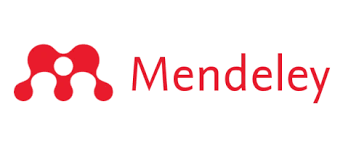Clustering of Child Stunting Data in Tangerang Regency Using Comparison of K-Means, Hierarchical Clustering and DBSCAN Methods
DOI:
https://doi.org/10.59888/ajosh.v2i12.422Keywords:
Stunting;, k-means;, Hierarchical Clustering;, DBSCAN;, Silhouette Score;, Nutritional Status;, Preventive Actions;, Curative MeasuresAbstract
This study aims to analyze stunting in children in Tangerang Regency using clustering methods such as k-means, Hierarchical Clustering with Agglomerative Nesting, and Density-Based Spatial Clustering of Applications with Noise (DBSCAN). Stunting is a significant health issue affecting child growth due to chronic malnutrition and recurrent infections. The research revealed that k-means produced the best clustering results with a Silhouette Score of 0.52, indicating its effectiveness in categorizing children based on age, nutritional status, and stunting risk. The k-means method identified three clusters: Cluster 0 (ages 46-55 months, good nutrition, no stunting), Cluster 1 (ages 9-18 months, varied nutritional status, high stunting risk), and Cluster 2 (ages 27-36 months, good nutrition, no stunting). The study suggests preventive actions such as balanced nutrition education, regular health monitoring, complete immunizations, and physical activity, alongside curative measures like nutritional consultations and supplements. The findings provide a framework for targeted preventive and curative interventions, enabling Tangerang Regency's health department to effectively address and reduce stunting rates.
Published
Issue
Section
License
Copyright (c) 2024 Muhammad Azzam Robbani, Gerry Firmansyah, Agung Mulyo Widodo, Budi Tjahjono

This work is licensed under a Creative Commons Attribution-ShareAlike 4.0 International License.
Authors who publish with this journal agree to the following terms:
- Authors retain copyright and grant the journal right of first publication with the work simultaneously licensed under a Creative Commons Attribution-ShareAlike 4.0 International. that allows others to share the work with an acknowledgement of the work's authorship and initial publication in this journal.
- Authors are able to enter into separate, additional contractual arrangements for the non-exclusive distribution of the journal's published version of the work (e.g., post it to an institutional repository or publish it in a book), with an acknowledgement of its initial publication in this journal.
- Authors are permitted and encouraged to post their work online (e.g., in institutional repositories or on their website) prior to and during the submission process, as it can lead to productive exchanges, as well as earlier and greater citation of published work.










